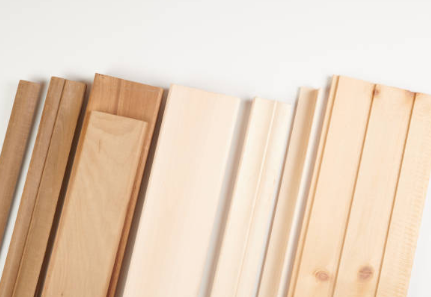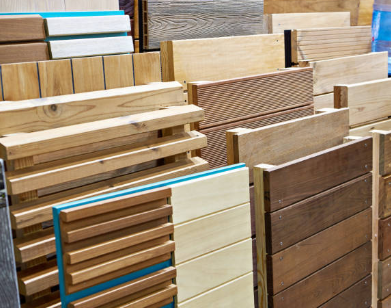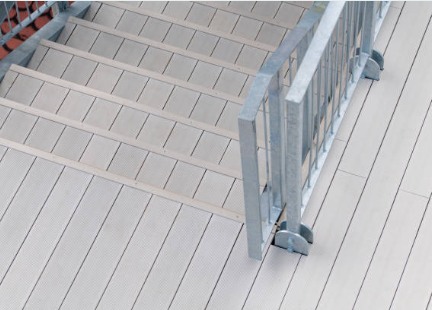Why is WPC Expensive: Exploring the Factors Behind the Cost
Wood-Plastic Composite (WPC) has gained immense popularity in recent years due to its durability, low maintenance, and eco-friendly nature. However, one common question that arises is why WPC comes with a higher price tag compared to traditional wood or other decking materials.
In this article, we will delve into the various factors that contribute to the higher cost of WPC and help you understand the reasons behind it.
The Raw Materials: A Blend of Wood and Plastic

WPC Flooring is a composite material made by combining wood fibers and plastic polymers. The raw materials used in WPC production significantly influence its cost. Wood fibers derived from high-quality sources, such as hardwood or bamboo, tend to be pricier compared to low-quality wood fibers.
Similarly, the type and quality of plastic polymers used, such as polyethylene or polyvinyl chloride (PVC), also play a role in determining the final cost of WPC.
Advanced Manufacturing Processes of WPC

The manufacturing process of WPC involves advanced techniques that require specialized machinery and skilled labor. The materials need to be properly mixed, heated, and extruded to form the desired shape and texture.
These intricate processes demand precision and expertise, which adds to the overall cost of WPC. The utilization of cutting-edge technology ensures the production of high-quality and durable WPC, but it also contributes to the higher price.
Advantages of WPC Flooring

Enhanced Durability and Longevity
One of the primary reasons people opt for WPC is its exceptional durability and longevity. Unlike traditional wood, WPC is resistant to rot, decay, and pest infestation. It can withstand harsh weather conditions, UV rays, and heavy foot traffic without deteriorating. The increased durability of WPC is achieved through the addition of additives, such as UV stabilizers and anti-fungal agents, which enhance its performance. These additives, along with the composite nature of WPC, contribute to its higher cost.
Low Maintenance Requirements
Another advantage of WPC is its low maintenance requirements. Unlike wood, WPC does not require regular staining, sealing, or painting to maintain its appearance and structural integrity. This saves both time and money in the long run. The incorporation of special coatings and protective layers during the manufacturing process makes WPC resistant to stains, fading, and moisture absorption. However, these additional features increase the cost of production, ultimately leading to a higher price for WPC products.
Environmental Considerations
WPC is often considered an eco-friendly alternative to traditional wood decking materials. It reduces the demand for timber, prevents deforestation, and utilizes recycled plastic, thereby reducing waste. The eco-conscious manufacturing processes and sustainable sourcing of raw materials come at a higher cost compared to conventional wood products. This commitment to environmental responsibility is reflected in the price of WPC.
Bonus: Specialized Installation Techniques
Installing WPC requires specialized techniques and tools. The unique characteristics of WPC, such as its composite nature and expansion/contraction properties, necessitate precise installation methods. This often involves hiring professional installers with specific expertise in working with WPC. The additional cost of specialized installation contributes to the overall higher price of WPC compared to other decking materials.
Availability and Demand of WPC Flooring Market

The availability and demand for WPC can also impact its pricing. As WPC gains popularity as a decking material, the demand for it increases. However, the production capacity of WPC manufacturers may not be able to keep up with the rising demand, leading to limited availability. When demand exceeds supply, prices tend to rise. Additionally, transportation costs and import/export fees can also influence the final price of WPC, especially in regions where it is not locally produced.
Quality Assurance and Warranty
Reputable manufacturers of WPC often invest in quality assurance processes and provide warranties to ensure customer satisfaction and peace of mind. These additional measures increase the overall cost of production, thereby impacting the price of WPC. However, the assurance of a high-quality product and the availability of warranty options make WPC an attractive choice for many homeowners.
Brand Reputation and Marketing Expenses
Established brands with a strong reputation tend to charge higher prices for their WPC products. This is because they invest heavily in research and development, marketing, and customer support. These expenses are factored into the product's price to maintain brand value and ensure customer loyalty. While branded WPC products may be more expensive, they often come with added benefits, such as better customer service and a proven track record of quality.
Comparative Cost Analysis

DIY My Flooring Decorations Freely
Lastly, it is essential to consider the long-term cost benefits of WPC compared to alternative materials. Although WPC may have a higher upfront cost, its durability, low maintenance requirements, and longevity can result in significant cost savings over time. When evaluating the expense of WPC, it is crucial to consider the overall value it provides in terms of aesthetics, durability, and reduced maintenance expenses.
Why is WPC expensive, WPC cost factors, wood-plastic composite pricing, WPC manufacturing, WPC durability, WPC maintenance, eco-friendly decking, specialized WPC installation, availability of WPC, WPC quality assurance, brand reputation in WPC market, comparative cost analysis of WPC Why is WPC Expensive: Factors Behind the Cost of Wood-Plastic Composite Uncover the reasons behind the higher cost of WPC (Wood-Plastic Composite) decking materials. Explore factors such as raw materials, manufacturing processes, durability, low maintenance requirements, and brand reputation.
FAQs about Wood-Plastic Composite Floor
1. What is WPC?
- WPC stands for Wood Plastic Composite. It is a material made by combining wood fiber or wood flour with thermoplastics like PE, PP, PVC, or PLA. The blend often includes additives such as colorants, coupling agents, stabilizers, blowing agents, reinforcing agents, or foaming agents. It is commonly used in decking and outdoor construction.
2. What is composite flooring?
- Composite flooring is a type of engineered flooring that combines several layers, including a top layer of luxury vinyl bonded to a rigid composite core. It's designed to be durable, resistant to moisture, and easy to maintain, making it suitable for both residential and commercial spaces.
3. How to clean WPC flooring?
- Clean WPC flooring by regularly sweeping or vacuuming to remove dirt. For deeper cleaning, use a damp mop with a mild cleaner specifically suited for vinyl flooring. Avoid abrasive tools and harsh chemicals to prevent damage to the surface.
4. Which is better, WPC or SPC flooring?
- The choice between WPC (Wood Plastic Composite) and SPC (Stone Plastic Composite) flooring depends on your needs. WPC flooring is softer and more comfortable underfoot due to its thicker, foam core, making it ideal for residential use. SPC flooring, however, is harder and more durable, better suited for high-traffic areas and commercial use.
5. How long can WPC flooring last?
- WPC flooring can last between 15 to 25 years depending on the quality of the material and the intensity of usage. Proper maintenance and care extend its lifespan, making it a durable option for flooring.

